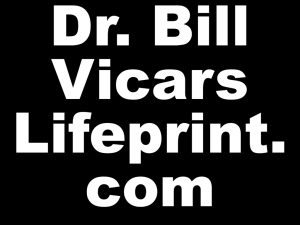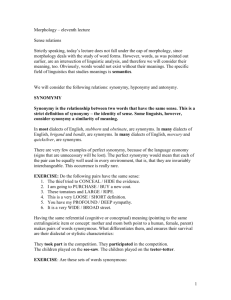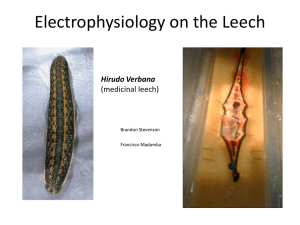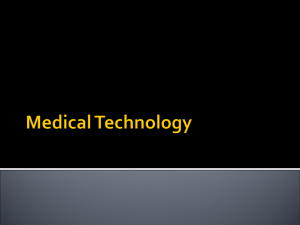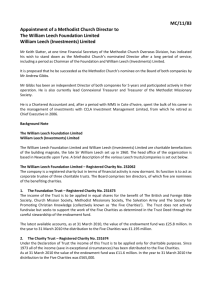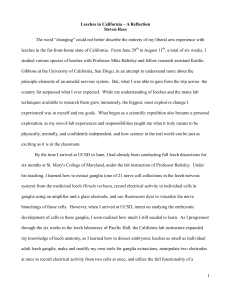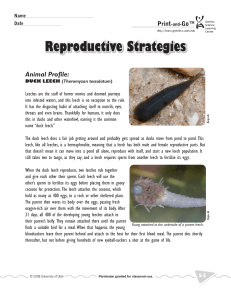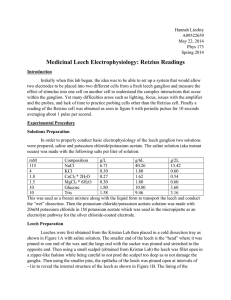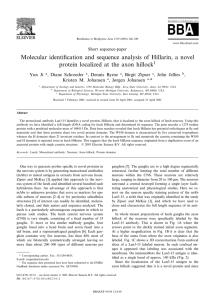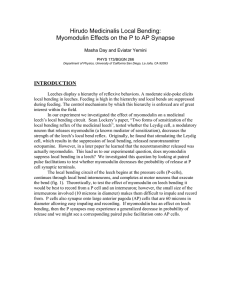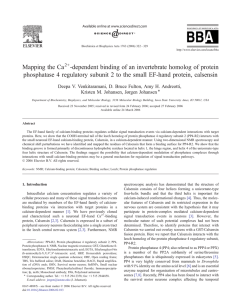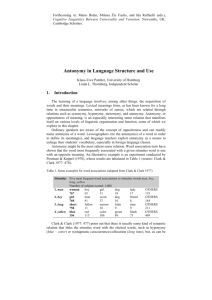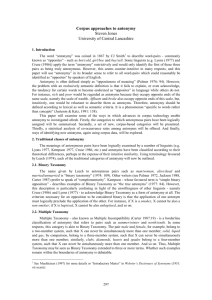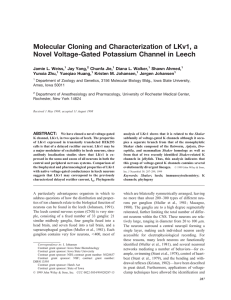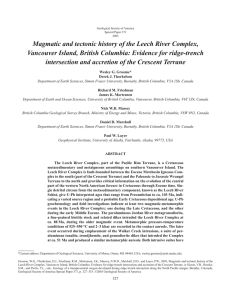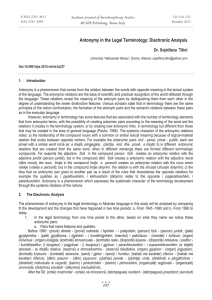Chapter Five Meaning
advertisement
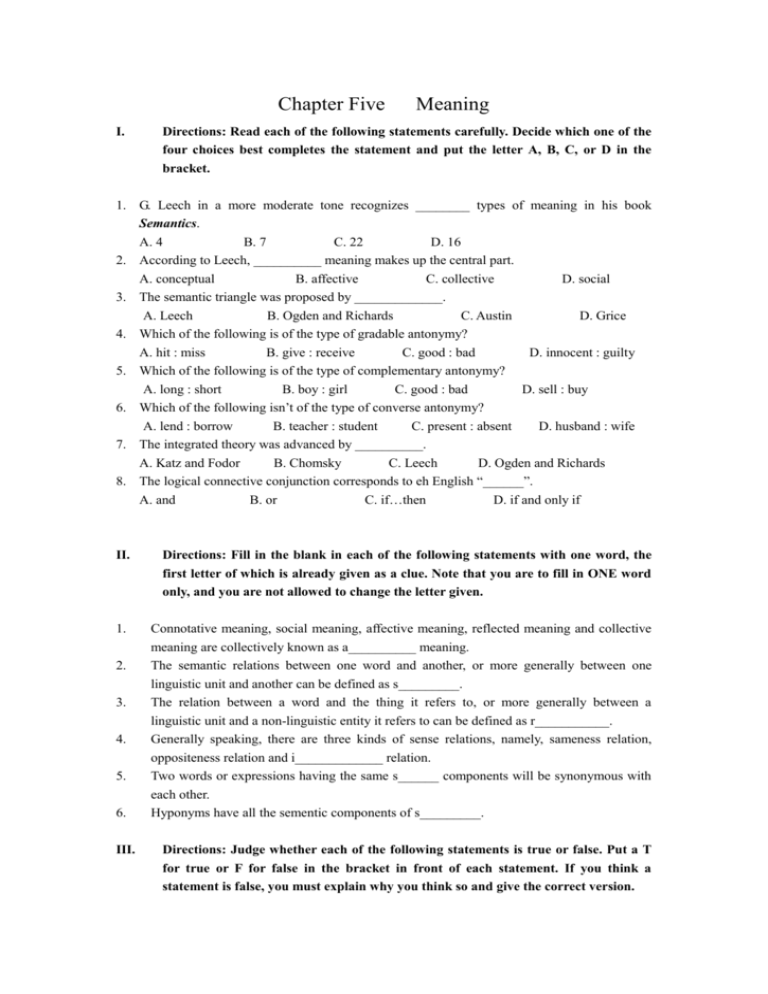
Chapter Five I. Meaning Directions: Read each of the following statements carefully. Decide which one of the four choices best completes the statement and put the letter A, B, C, or D in the bracket. 1. G. Leech in a more moderate tone recognizes ________ types of meaning in his book Semantics. A. 4 B. 7 C. 22 D. 16 2. According to Leech, __________ meaning makes up the central part. A. conceptual B. affective C. collective D. social 3. The semantic triangle was proposed by _____________. A. Leech B. Ogden and Richards C. Austin D. Grice 4. Which of the following is of the type of gradable antonymy? A. hit : miss B. give : receive C. good : bad D. innocent : guilty 5. Which of the following is of the type of complementary antonymy? A. long : short B. boy : girl C. good : bad D. sell : buy 6. Which of the following isn’t of the type of converse antonymy? A. lend : borrow B. teacher : student C. present : absent D. husband : wife 7. The integrated theory was advanced by __________. A. Katz and Fodor B. Chomsky C. Leech D. Ogden and Richards 8. The logical connective conjunction corresponds to eh English “______”. A. and B. or C. if…then D. if and only if II. Directions: Fill in the blank in each of the following statements with one word, the first letter of which is already given as a clue. Note that you are to fill in ONE word only, and you are not allowed to change the letter given. 1. Connotative meaning, social meaning, affective meaning, reflected meaning and collective meaning are collectively known as a__________ meaning. The semantic relations between one word and another, or more generally between one linguistic unit and another can be defined as s_________. The relation between a word and the thing it refers to, or more generally between a linguistic unit and a non-linguistic entity it refers to can be defined as r___________. Generally speaking, there are three kinds of sense relations, namely, sameness relation, oppositeness relation and i_____________ relation. Two words or expressions having the same s______ components will be synonymous with each other. Hyponyms have all the sementic components of s_________. 2. 3. 4. 5. 6. III. Directions: Judge whether each of the following statements is true or false. Put a T for true or F for false in the bracket in front of each statement. If you think a statement is false, you must explain why you think so and give the correct version. 1. Syntax is the least known area in linguistics, compared with phonetics, phonology, morphology and. Semantics. 2. Conception meaning overlaps to a large extent with the notion of reference. 3. Total synonymy is rare and all the so-called synonyms are context dependent. 4. When we say two words are antonyms, we mean they are of sameness relation. 5. Gradable antonymys may have comparative and superlative degrees. 6. Complementary antonymys can be modified by “very”. 7. Converse antonymys are also known as relational opposites. 8. A superordinae ususlly has several hyponyms. 9. A superordinate cannot be a superordinate to itself. 10. The meaning of a sentence is not simply the sum total of the meaning of the words used in it. IV. 1. 2. 3. 4. 5. 6. 7. 8. 9. 10. V. Directions: Explain the following terms, using one or two examples for illustration. Semantics conceptual meaning connotative meaning social meaning affective meaning reflected meaning collective meaning thematic meaning compositionality sense Answer the following questions. 1. What are the three kinds of antonymy? List at least two examples to illustrate. 2. Identify the sense relations between the following pairs of sentences: 1). A. Jack had a serious car accident. B. Jack was injured. 2). A. He loves his son very much. B. He has a son.

